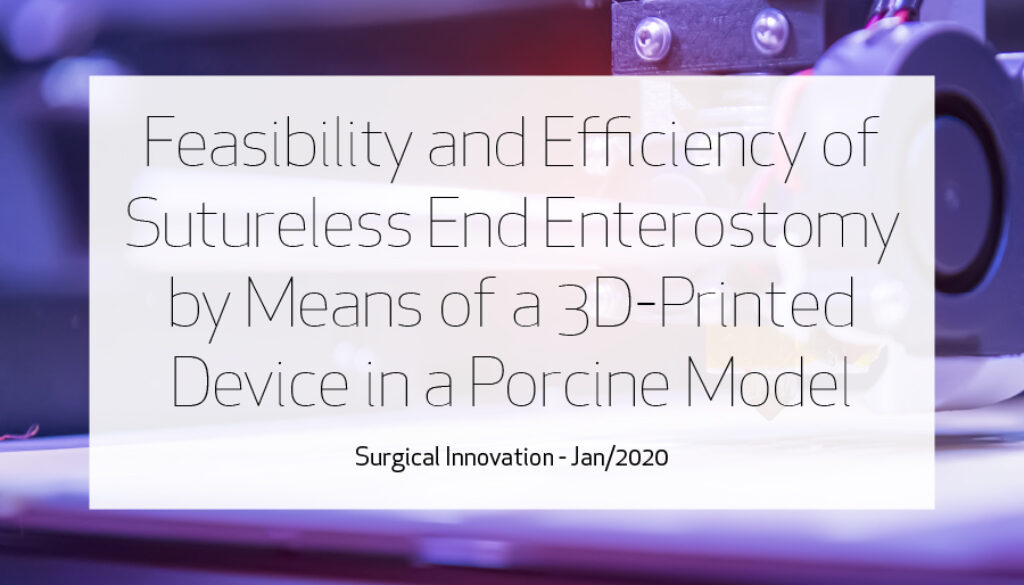[Article] Feasibility and Efficiency of Sutureless End Enterostomy by Means of a 3D-Printed Device in a Porcine Model

Objective. The aim of this study is to present a 3-dimensional (3D)-printed device to simply perform abdominal enterostomy and colostomy. Summary Background Data. Enterostomy and colostomy are frequently performed during abdominal surgery. 3D-printed devices may permit the creation of enterostomy easily. Methods. The device was designed by means of a CAD (computer-aided design) software, Rhinoceros 6 by MC Neel, and manufactured using 3D printers, Factory 2.0 by Omni 3D and Raise 3D N2 Dual Plus by Raise 3D. Colostomy was scheduled on a human cadaver and on 6 Pietrain pigs to test the device and the surgical technique. Results. The test on the cadaver showed that the application of the device was easy. Test on porcine models confirmed that the application of the device was also easy on the living model. The average duration of the surgical procedure was 32 minutes (25-40 minutes). For the female pigs, return to full oral diet and recovery of a normal bowel function was observed at postoperative day 2. The device fell by itself on average on the third day. Until day 10, when euthanasia was practiced, the stoma mucosa had a good coloration indicating a perfect viability of tissues. No complications were observed. Conclusions. This is the first study that describes the use of a 3D-printed device in abdominal surgery. End-type colostomy using a 3D-printed device can be safely and easily performed in an experimental porcine model, without postoperative complications. Further studies are needed to evaluate its utility in the clinical setting.
Eric Sejor, MD, Tarek Debs, MD, Niccolo Petrucciani, MD, PhD, Pauline Brige, MD, Sophie Chopinet, MD, Mylène Seux, PhD, Marjorie Piche, MD, Aline Myx-Staccini, MD, Imed Ben Amor, MD, Sebastien Frey, MD, Frederic Prate, MD, Arnaud Zenerino, PhD, and Jean Gugenheim, MD, PhD, Feasibility and Efficiency of Sutureless End Enterostomy by Means of a 3D-Printed Device in a Porcine Model, Surgical Innovation, 2020, 1-8 (https://doi.org/10.1177/1553350619895631).





